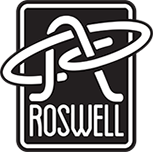How much preamp gain do I need to record?
The Basics of Gain-Staging
Use as little preamp gain as needed to get a usable signal level* into the DAW.
If your recording experience is limited to dynamic microphones, you might think that every source requires the mic preamp to have its gain knob cranked up to 50% or higher. That is not the case for most condenser microphones, whose output level could be 20dB higher than a typical dynamic (e.g. the SM57).
Preamps add noise
Preamps (including the mic preamp built into a recording interface or "sound card") add noise as well as gain. At low gain levels, the noise is minimal. Turned up past 40%, most preamps (especially including the ones built into inexpensive bus-powered audio interfaces) begin adding audible noise.
The higher you turn the gain knob on the mic pre, the more noise will be added to your track.
Therefore if you are recording a quiet source, you can often get lower-noise tracks if you increase the signal level before the signal reaches the preamp. Two ways to do this:
- Move the mic closer to the source
- Use a mic with higher sensitivity, such as a condenser mic, rather than a dynamic or ribbon
Some preamps add gain even when turned down all the way
Most entry-level preamps do not mark true gain levels on their gain controls. Turning a rotary pot fully counter-clockwise is (obviously) the way to add the least amount of gain to your mic's signal. Sometimes that position adds more than 0dB, however.
 The SSL2, for example, adds approximately 6dB even when the gain knob is rotated fully CCW.
The SSL2, for example, adds approximately 6dB even when the gain knob is rotated fully CCW.
For most recording, that is not a problem. It would become a problem only if you are using a high-sensitivity mic on a very loud source.
In such cases, you would need to to find a way to reduce the signal level somewhere, e.g. by engaging the attenuation pad on the mic (if that feature exists), or using a mic preamp with a pad, or using a mic pre with less minimum gain. The MOTU M4, to name one example, adds 0dB when its gain control is turned fully CCW.
* What is a "usable signal level" ?
If you are recording at 24 bits (which you should be, because 24-bit recording has a lower noise floor than 16-bit), your track's peaks should never exceed -6dBFS. It would be safer to turn down the preamp even lower, to where peaks show up at -10dBFS in the DAW.
To be clear, if the peaks are at -6 or -10dBFS, that means the meter will spend most of its time at a much lower level, -20dBFS or possibly lower. That's not a problem.
What is a problem is exceeding 0dBFS, because that causes "digital clipping," which does not sound good. You must avoid clipping the ADC (analog digital converter) at all costs; if you clip your ADCs because the mic pre was turned up too high, you will probably need to re-record that track.
Decades ago, audio engineers would record at much higher levels that this. They needed to do so because signal chains in those days had significantly higher noise -- the mics, the preamps, and the media (tape) all had higher noise than modern gear. Also relevant is that tape does not exhibit digital clipping. To some degree, recording high levels to tape could enhance the sound of the track, because the tape media would provide a sort of compression.
Early digital recording gear operated at 16 bits, which was functional but had relatively limited dynamic range. In simple terms, there is arguably a noise-reduction benefit to recording at higher levels to a 16-bit system, so long as the track never exceeds 0dBFS. The introduction of 24-bit recording systems increased the dynamic range by nearly 50%, which erases the benefit of recording at higher input levels. Therefore, to avoid the risk of clipping digital converters, most experts recommend the advice above: peaks should never exceed -6dBFS in a 24-bit system.
All content Copyright ©2025 Roswell Pro Audio, LLC
Return to article index:
Getting the most from your microphone
